Best Read-It-Later Apps in 2025: Top Ways to Save Web Pages & Content
There’s a lot of content available online for reading but not a lot of time to consume it. If you like bookmarking content and coming back to it later, the best read-it-later apps are a must-have. Here are Cloudwards’ top five recommendations.
If you consume a lot of content online, you absolutely need to find and use one of the best read-it-later apps. Without one, if you can’t follow through on reading all that exciting content right away, you might find yourself ignoring or forgetting it down the road. Thankfully, our expert team of reviewers is here to save the day.
Key Takeaways:
- Read-it-later apps are a great way to return to the interesting articles you don’t currently have the time to read. These apps allow you to archive articles for future access.
- Pocket and Instapaper are currently the two most popular apps, with each having its own set of unique features.
- Pocket is a great option for users seeking text-to-speech, while Instapaper is the better aesthetic choice and comes with a speed-reading button.
- You can also use bookmarking and note-taking apps on your default browser as an alternative to dedicated read-it-later apps.
The apps below help put the power of browsing to work for us rather than against us. You can save all the articles you find in a reading queue, then arrange them in order of importance. When you sit down to catch up on what you’ve saved, you’ll know exactly where to find the good stuff.
What Makes the Best Offline Apps?
The best offline read-it-later apps can let you organize your articles with folders, tags or both to keep track of things that interest you. Read-it-later apps store articles (or at least their titles and links) on your device, so you can read them when you have time. We tested dozens of tools to make sure that all of our suggestions are truly the best out there.
- Pocket — The best read-it-later app for converting readable content into podcasts
- Instapaper — Mostly suited for speed-readers
- EmailThis — For users who want to keep all their content within their inbox
- Safari Reading List — For Apple iOS users
- Raindrop — A generous free plan with multi-device access
Read-it-later apps ideally offer mobile, tablet and desktop versions. Some apps save entire articles for offline reading (great for frequent travelers or those who need instant accessibility), while others only save the title, so you can remember to search for it again. Custom fonts, color schemes and organization features are also important to consider.
Given these criteria and our extensive testing, our top read-it-later apps are Pocket, Instapaper, EmailThis, Safari Reading List and Raindrop. Keep reading for our detailed reviews of each service.
The 5 Best Apps for Offline Reading
Here are five of the best read-it-later apps that can save your articles in just one click.
1. Pocket: The Best Read-It-Later App
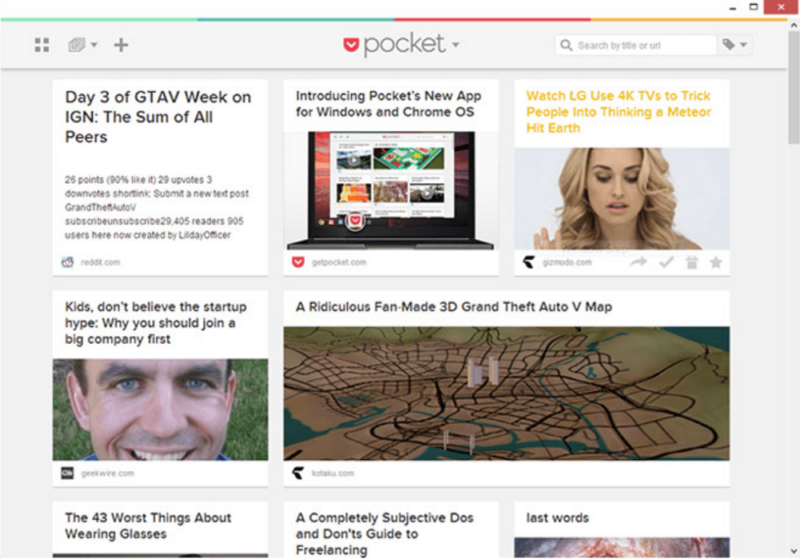
More details about Pocket:
- Pricing: Free plan; Premium plan costs $5 per month
- Provider website: www.getpocket.com
Pros:
- Clean interface
- Highlights feature
- Supports most devices
Cons:
- Limited bookmarks view
- Limited organization tools
- Limited free plan
Pocket offers rich features and wide compatibility across devices and operating systems. The Pocket API also provides secure integrations with most third-party apps. The user interface is also great, with the option to customize the appearance of your articles in a dark, paper or light color scheme.
The free version also gives you a few fonts to choose from.
Pocket’s organization feature uses a tag system and provides unlimited tags you can add to articles and search for later. The Premium plan subscription backs up the articles, so you can still see them if they are removed online, and you can also highlight important snippets. Pocket’s most unique feature is its text-to-speech functionality with adjustable speeds and playback, which makes it ideal for fans of audio content.
Pocket’s free plan lets you save unlimited articles and includes offline reading and tags; however, you’ll be limited to three highlights per article. Serious researchers can opt for Pocket Premium at 25% off the monthly price or $45 per year. This unlocks permanent backups, advanced search options and ad removal.
2. Instapaper
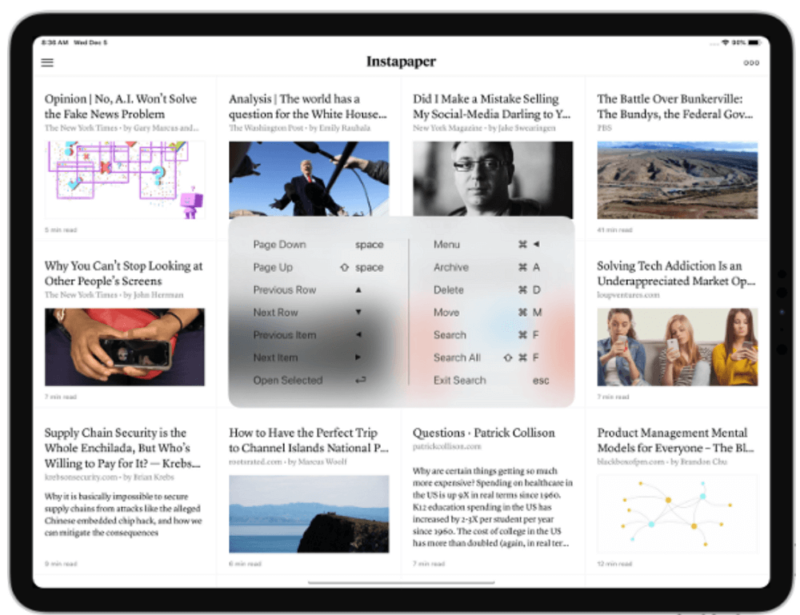
More details about Instapaper:
- Pricing: Free plan; Premium plan costs $3 per month
- Provider website: www.instapaper.com
Pros:
- Clean, minimalistic interface
- Several customizable features
- Add notes to highlights
Cons:
- Organization limited
- Text-to-speech for Premium users only
Instapaper focuses on simplicity, with a black-and-white interface that limits color to article images. It also offers more customization features than Pocket such as font size, line spacing and background colors.
Instapaper is available across all major platforms including macOS, iOS and Android for phones, and provides browser extensions for Chrome, Safari and Firefox. Its integration for Kindle is also a little bit more traditional, requiring a USB connection or send-to-Kindle functionality. Unfortunately, the ability to directly share articles to Kindle is limited to the Premium plan.
The most unique feature of Instapaper is its speed-reading functionality. This flashes one word at a time in quick intervals on the screen, at a reading speed you set. You can also add your own notes to highlights — a feature that Pocket does not support.
Instapaper’s free plan lets you save unlimited articles, but the text-to-speech feature is reserved for paid users. Free users are also limited to only five notes per month and 10 articles for speed-reading.
With Instapaper Premium, you can remove ads and access the full suite of text features, including unlimited speed-reading. You can get 17% off the monthly price if you opt for the yearly plan at $30 per year.
3. EmailThis
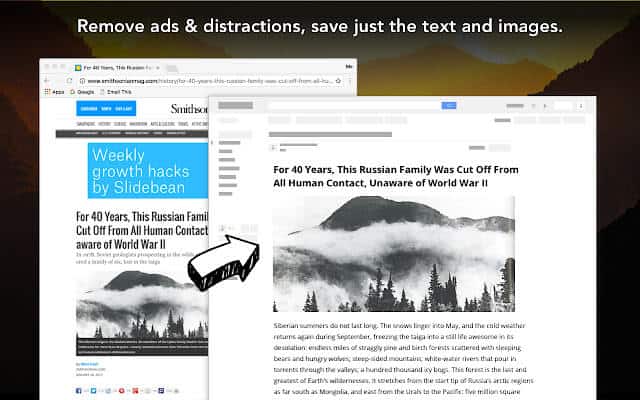
More details about EmailThis:
- Pricing: Free plan; Premium plan costs $19 per year
- Provider website: www.emailthis.me
Pros:
- No third-party app needed
- Simple to use via extensions
- Keeps articles in one place
Cons:
- Limited customization
- E-mail user centric
- Can’t sort articles well
For avid email users, EmailThis is a great option that centralizes all your articles in your inbox. It’s operated wholly through a bookmarklet or browser extension. The app delivers the articles to your email and adopts the user interface of your email provider. It doesn’t offer many features to use tags or organize your articles, though you may be able to find replacements in your email client.
That being said, it’s ultra simple to use and you don’t have to deal with ads. It also works across all browsers. As long as you have your email app installed on your devices of choice, you’re good to go.
With the free plan, you can only save up to 20 articles per month. If you need more, you can upgrade to the Premium plan for unlimited articles. You also get the ability to save your articles in different email attachment formats such as PDF, Excel or Doc files. You can attach notes, click PDF snapshots and use keywords to make articles easier to search.
4. Safari Reading List
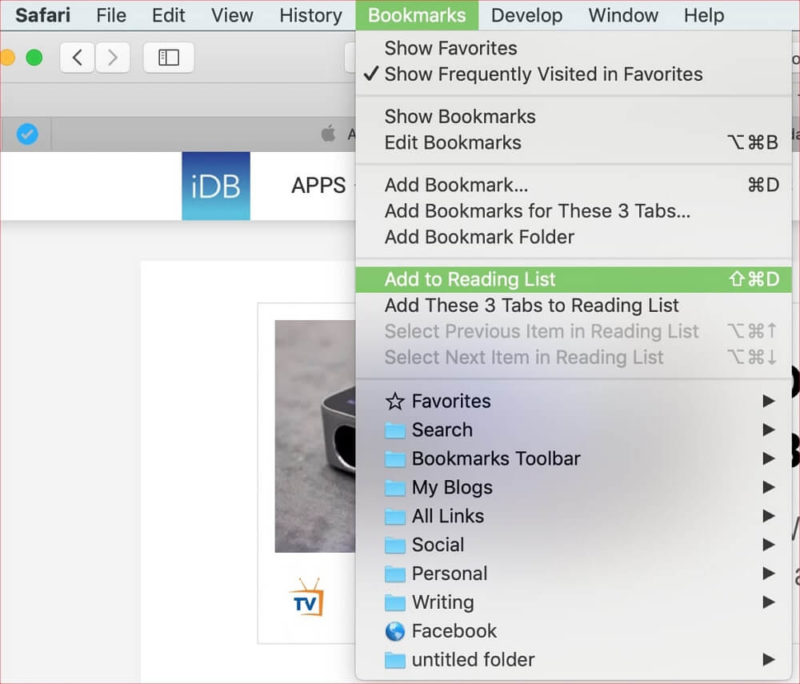
More details about Safari Reading List:
- Pricing: Free
- Provider website: support.apple.com
Pros:
- Simple & easy to use
- Syncs across Apple devices
- Search feature available
Cons:
- For Apple devices only
- No organization features
- Limited customization
If you own a lot of Apple devices and want to avoid the hassle of installing a third-party app, the Safari reading list feature is perfect for you. The browser comes with a built-in reading list and a very simple way of using it. All you have to do is click the “+” on the address bar on Mac devices.
You’ll find this under share > add to reading list on iPhone.
Compared to dedicated read-it-later apps, Safari doesn’t offer many customization options. You can only change the background colors and fonts (from Apple’s available options) to your liking, but you do get the benefit of having your saved articles accessible for offline reading.
Best of all, Safari Reading List is totally free to use on Apple devices.
5. Raindrop
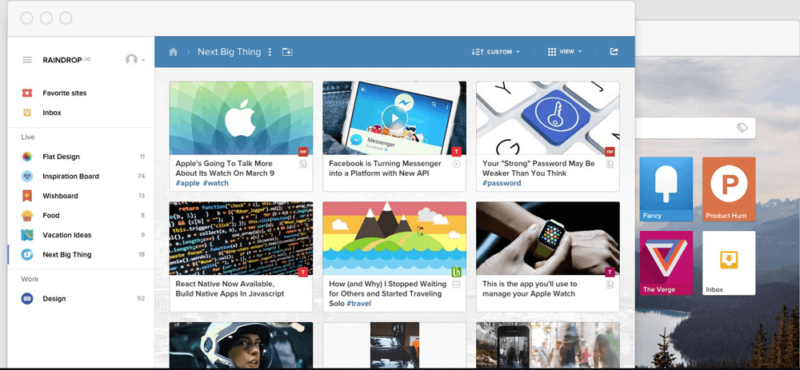
More details about Raindrop:
- Pricing: Free plan; Pro plan costs $3 per month
- Provider website: www.raindrop.io
Pros:
- Free unlimited bookmarks
- Great for desktop devices
- Attractive interface design
Cons:
- Bookmarks slow the app
- Internet connection required
- Complicated functionality
Raindrop is a bookmarking app with an extensive free plan. It’s available on mobile, but its modern, user-friendly interface is best experienced on desktop. With Raindrop, you get unlimited article bookmarks and devices without paying.
The paid Pro plan unlocks more advanced features like a full-text search, access to saved pages even if they’ve been removed, automatic backups and suggested tags to organize your collections. Note that these features only work with an active internet connection.
Raindrop’s freemium plan is pretty generous, with unlimited bookmarks, unlimited highlighting and multi-device access. It has apps designed for all major platforms and browsers, with a cap of 100MB per month on file storage. This would afford you around 50 articles (assuming they’re a little media-heavy).
If you want to unlock the full power of the premium features for a full year, you can save 20% on a Pro plan by paying $28 for the yearly plan.
Final Thoughts
That’s the end of our list of the best read-it-later apps. Pocket is easily our favorite, due to its user-friendly interface and great features. Instapaper comes next because it offers great value for money and speed reading functionality (more on that in our Instapaper vs Pocket). However, the other options on this last are all good choices, depending on your needs.
Read-it-later apps can help you set aside the time you need to consume important content. Do you use a read-it-later app already? What’s your favorite? Do you agree with our picks? Let us know in the comments, and as always, thanks for reading (now or later!).
FAQ
If you’re not using a read-it-later app, you can save articles directly to your device by using the “save page as” option.
Instapaper is the more aesthetically pleasing option, with more font customization and speed-reading features. Pocket, with its text-to-speech feature, is best for those who want audio aid.
Pocket is a read-it-later app that enables text-to-speech conversion.


